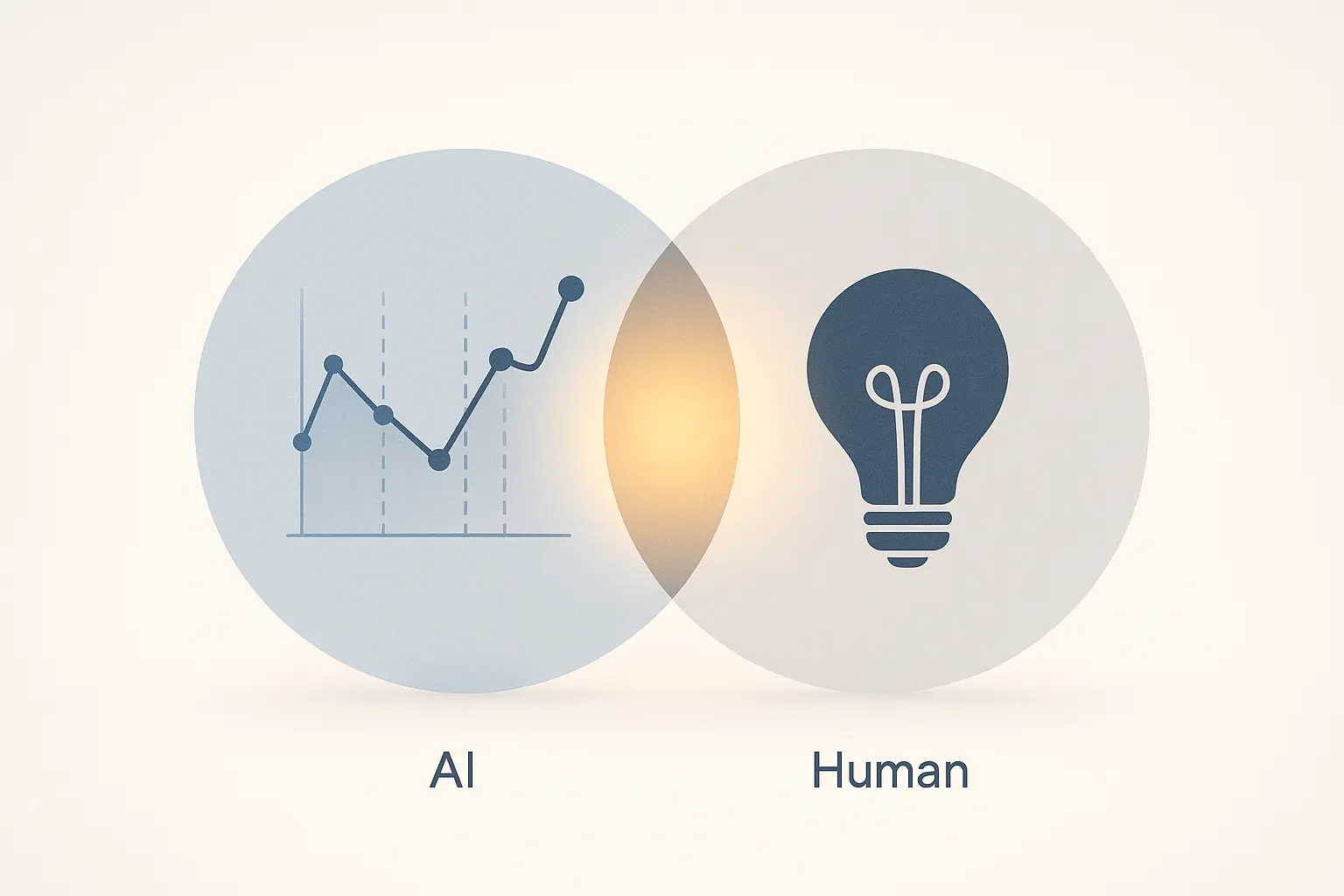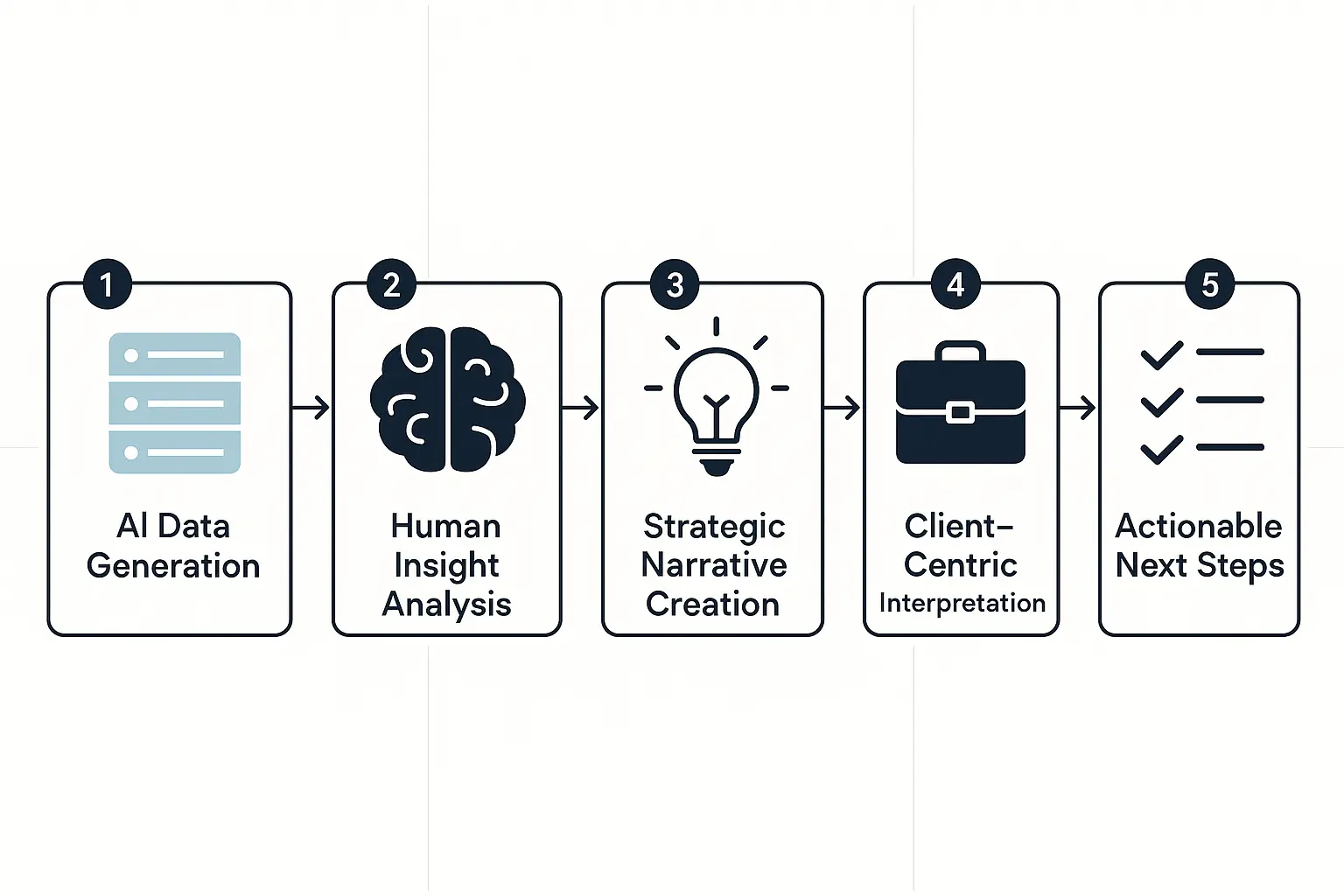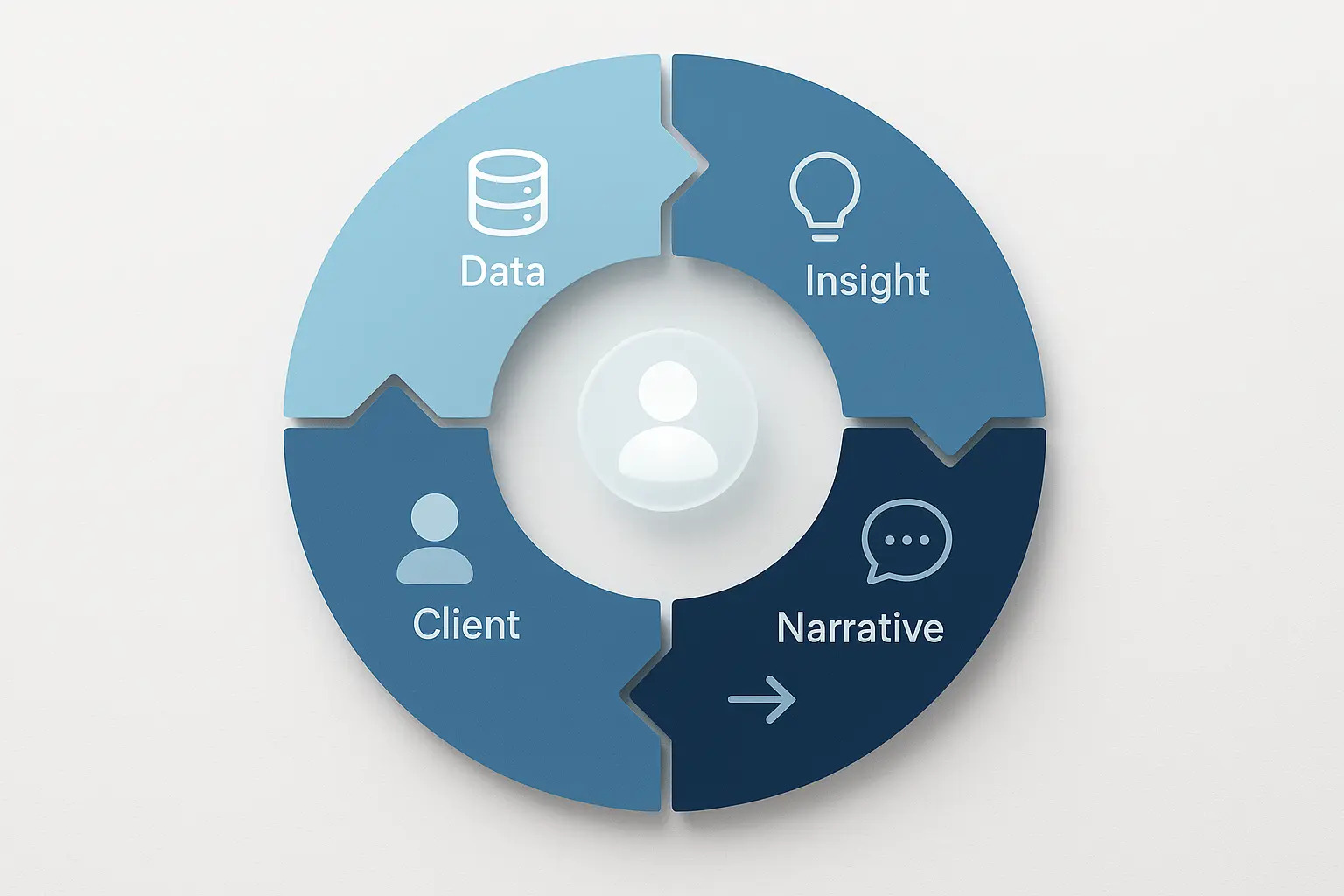You hit “send” on the monthly SEO report. It’s packed with data—rankings are up, traffic is green, and the AI-powered platform generated a beautiful 20-page PDF. You feel good.
An hour later, your client replies: “Thanks. So… what does this all mean for us?”
That single question can make your heart sink. In a world saturated with data, we’ve become incredibly efficient at reporting the what. But clients don’t buy data; they buy outcomes, understanding, and confidence. This is where the most valuable work begins—long after the AI has done its part.
The reality is that even the most advanced report is just a collection of facts without a story. That’s where you, the human expert, come in. This final, crucial step is what we call the “Human Overlay”—the strategic narrative that transforms automated data into a compelling story of progress and a clear roadmap for the future.
Why Raw Data Is No Longer Enough
We live in an era of unprecedented automation. AI can track thousands of keywords, analyze competitor backlink profiles, and generate technical audits in minutes. It’s a massive leap forward in efficiency. But this flood of accessible data has created a new problem: data overload without interpretation.
A staggering 78% of B2B marketers admit they struggle to demonstrate the ROI of their efforts. This isn’t because the results aren’t there; it’s because the story connecting data points to business goals is missing. We send clients a spreadsheet and expect them to see the novel.
What’s more, 93% of B2B buyers now expect a highly personalized experience. A generic, automated report is the opposite of personal. It tells the client they are just another number, receiving the exact same deliverable as everyone else.
This is the core challenge for modern agencies: how do you leverage the incredible scale of AI without losing the strategic, human touch that builds trust and retains clients?
Introducing the Human Overlay Method
The Human Overlay isn’t about manually re-creating a report. It’s about adding a thin but powerful layer of human intelligence on top of the automated output. It’s the difference between handing someone a pile of bricks and showing them the blueprint for the house you’re building together.
Think of it as a three-part framework: Context, Insight, and Action.
1. Context: Setting the Stage (The “Why”)
An AI report tells you that organic traffic increased by 15%. A human overlay explains why. It connects the data to the bigger picture.
Before your client even looks at a graph, your summary should answer these questions:
- What was our goal this month? (e.g., “Our focus was on building authority for our new ‘Project Management Software’ service pages.”)
- What business conditions influenced these results? (e.g., “This growth happened despite a major Google algorithm update that impacted many of our competitors.”)
- How does this compare to our expectations? (e.g., “The 15% increase in traffic significantly outpaced our 8% target for the quarter.”)
Providing context validates your strategy and reminds the client that there’s a deliberate plan in motion. You’re showing them you’re not just throwing tactics at the wall but executing a considered strategy—moving beyond simple fulfillment to become a true strategic partner.
2. Insight: Telling the Story (The “So What?”)
This is where you connect the dots. Data points are plot points; your job is to weave them into a narrative. Don’t just list the wins—explain what they signify.
-
Instead of: “We gained 5 new backlinks.”
-
Try: “We secured 5 new backlinks from top-tier industry publications. So what? This not only boosted our domain authority but also put our brand in front of an estimated 50,000 potential customers, driving significant referral traffic.”
-
Instead of: “Keyword ‘X’ is now on page 1.”
-
Try: “We successfully moved our primary buying-intent keyword, ‘emergency plumbing services,’ to position #3. So what? This single move is now responsible for an estimated 40 new leads per month, directly impacting the sales pipeline.”
This is also your chance to address challenges transparently, building immense trust. If a metric is down, the human overlay explains the likely reason, preempting client anxiety. Mastering this narrative layer is essential for agencies using white-label SEO services, as it’s what makes the work feel truly their own.
3. Action: Charting the Course (The “Now What?”)

The most critical part of any report is what happens next. An AI report shows the past; your human overlay builds the future. This is where you prove your ongoing value and keep the engagement moving forward.
End your report summary with a clear, concise action plan.
- Capitalize on Wins: “Given our success with the ‘Project Management’ content, we recommend doubling down next month with two new articles targeting adjacent keywords.”
- Address Challenges: “We noticed a dip in traffic from social media. Next month, we’ll collaborate with your social team to create three SEO-optimized posts to recapture that momentum.”
- Introduce New Opportunities: “Our competitor analysis revealed a gap in video content. We propose creating a short explainer video to target high-value search terms on both Google and YouTube.”
This turns the report from a backward-looking document into a forward-looking strategic plan. It shows proactive leadership and gives the client confidence that you are always thinking one step ahead. This is how agencies scale SEO effectively: by automating data-gathering and focusing human talent on high-impact strategy.
Putting It All Together: Your New Reporting Workflow
- Automate First: Let your AI tools do the heavy lifting. Generate the technical audit, the ranking report, and the traffic analysis.
- Craft an Executive Summary: Create a one-page summary or a 3-slide deck that lives at the very beginning of the report. This is your Human Overlay.
- Lead with the Story: When you present the report, spend 80% of your time on the summary and the action plan. The detailed data is the appendix, there to support your story if needed.
- Educate and Empower: Use this as an opportunity to educate your client. Explain why certain metrics matter more than others and how your planned actions will drive their business goals.
By adopting the Human Overlay method, you shift your role from a data provider to an indispensable strategic partner. You deliver not just information, but clarity, confidence, and a clear path to growth—something no AI can replicate.

Frequently Asked Questions (FAQ)
Q1: Isn’t the AI-generated report good enough on its own?
An AI report is excellent at gathering comprehensive data. However, it lacks the context and strategic interpretation that connects SEO activities to a client’s specific business goals. The Human Overlay bridges that gap, turning data into a story of value and progress that clients can easily understand.
Q2: How much time does adding a “Human Overlay” take?
Initially, it might take 30–60 minutes to analyze the data and craft the narrative. But as you become more familiar with the client’s goals and your SEO strategy, this process becomes much faster. The time invested pays huge dividends in client retention and satisfaction, as it demonstrates your strategic value.
Q3: What if I’m not an SEO expert? I’m an account manager.
You don’t need to be a deep technical expert to apply the Human Overlay. Your strength is your understanding of the client’s business. Focus on connecting the SEO team’s report to the client’s world. Ask your SEO specialists, “What’s the most important takeaway for the client here?” and translate that into business language.
Q4: Can this method work for a small agency with many clients?
Absolutely. In fact, it’s even more crucial for small agencies. Leveraging AI for the bulk of the reporting frees up your limited human resources to focus on this high-impact activity. A simple, templatized one-page summary is a scalable way to deliver immense value and stand out from competitors who only send automated data dumps.
Q5: Will clients pay more for this level of strategic input?
While you might not charge for the report itself, this method is directly tied to client retention and perceived value. Clients are less likely to question your fee or shop for a cheaper provider when they clearly see the strategic thinking you bring to the table. It justifies your value beyond raw output and cements your role as a long-term partner.


